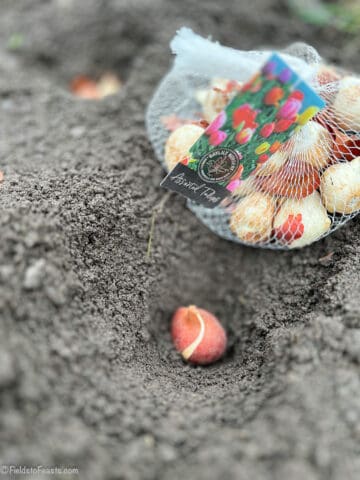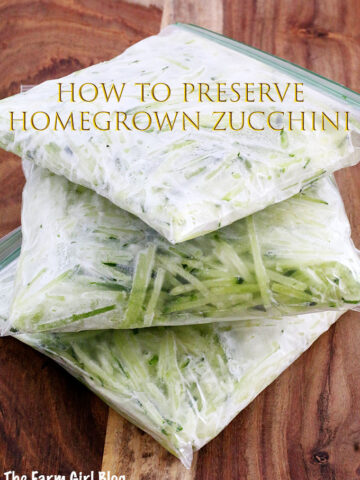Learning how to freeze meat is incredibly important and can help prevent freezer burns. Freezer burn can affect the quality and taste of your meat, so understanding the process is crucial for maintaining delicious and nutritious meals.

When buying beef, poultry, pork, or lamb in a bulk amount, you need to freeze it from spoiling quickly. Once the meat is frozen, it maintains its quality and taste for several months.
In this article, I'll cover everything you need to know to freeze meat properly and prevent freezer burns on your meat.
Table of Contents
- Benefits of Freezing Meat
- What Causes Freezer Burn
- How to Freeze Meat Properly (Step by Step)
- Tips for Properly Wrapping Meat Before Freezing
- How to Store Meat in the Freezer
- How to Monitor Meat After Freezing
- The Best Temperatures for Freezing Meat
- How to Properly Defrost Meat After Freezing
- Printable Card
Benefits of Freezing Meat
Freezing meat offers several benefits for anyone looking to preserve their food. One of the primary advantages of freezing meat is the ability to preserve its freshness.
When meat is frozen, the low temperature inhibits the growth of bacteria and other microorganisms that can cause spoilage. This means that you can store meat for longer periods without worrying about it going bad.
Another benefit of freezing meat is the reduction of food waste. By freezing meat, you can prevent it from spoiling and ultimately being thrown away. This is especially useful if you find yourself with excess meat that you can't consume immediately. Instead of letting it go to waste, you can simply freeze it and use it at a later time.
This not only saves you money but also contributes to a more sustainable lifestyle by minimizing food waste.
In addition to preserving freshness and reducing waste, freezing meat can also save you valuable time.
By freezing meat in advance, you can prepare meals ahead of time and have them readily available whenever you need them. This is particularly convenient for busy individuals or families who may not have the time to cook every day.
Whether you're a working professional or a parent juggling multiple responsibilities, having pre-frozen meat allows you to quickly and easily prepare a delicious and nutritious meal without the hassle of extensive preparation.
What Causes Freezer Burn
Understanding the causes of freezer burn is essential in preventing it. Freezer burn occurs when the moisture in the meat evaporates and forms ice crystals on the surface. This process leads to dry spots and discoloration, affecting the texture and taste of the meat.
Improper packaging is a common cause of freezer burn. When food is not properly sealed or wrapped, it is exposed to air, which accelerates the evaporation of moisture. This is especially true for meats that are not tightly wrapped or stored in airtight containers.
The lack of a protective barrier allows air to come into direct contact with the meat, causing it to lose moisture more rapidly and increasing the likelihood of freezer burn.
Another factor that contributes to freezer burn is prolonged exposure to air. When food is left in the freezer for an extended period, the constant circulation of cold air can lead to moisture loss. This is particularly true for items that are stored in the freezer for months or even years.
Over time, the repeated freeze-thaw cycles and exposure to air can cause significant moisture loss, resulting in freezer burn.
How to Freeze Meat Properly (Step by Step)
How to Wrap Meat for Storing
Let's first look at exactly how to wrap meat properly for storing along with the supplies you'll need:
Supplies You'll Need
- Meat: This could be any cut of meat that you prefer.
- Freezer Paper: To prevent the meat from freezer burn, I like to wrap the meat in freezer paper. This waxy coated paper does not let the air go through which prolongs the quality of the meat while it’s being frozen.
Step-by-Step Process to Wrap Meat
First things first, cut the meat into preferred chunks.
Next, tear the freezer paper into necessary piece sizes.
Place a chunk of meat onto the freezer paper.
Wrap the meat tightly into freezer paper and tape the sims with masking tape or paper tape.
Finally, label each piece of meat by writing the type of meat, month, day, and year if you plan to freeze it for a longer period of time.
WATCH YOUTUBE VIDEO BELOW ON HOW TO FREEZE AND PREVENT MEAT FROM FREEZER BURN
How to Freeze Meat
Now that you've wrapped your meat properly, it's time to freeze it correctly. Follow these step-by-step instructions:
- Prep the Freezer: Make sure your freezer is clean and at the appropriate temperature for freezing meat.
- Organize Space: Depending on the amount of meat you're freezing, rearrange the items in your freezer to create enough space.
- Stacking Method: If you have limited space, consider stacking the wrapped meat in a way that allows for proper airflow. Ensure that the meat is not overcrowded.
- Location: Place the wrapped meat in a location in the freezer where it will remain undisturbed.
Tips for Properly Wrapping Meat Before Freezing
Proper wrapping is crucial in preventing freezer burn and maintaining the quality of your meat. Follow these tips for optimal wrapping:
- Double Wrapping: Use two layers of wrapping material, such as freezer, for added protection against air and moisture.
- Use masking tape: Make sure to use tape to secure the edges properly so that it doesn't unravel on its own.
- Tight Seal: Ensure your wrapping is tightly sealed to prevent any air from entering and causing freezer burn.
- Labeling: Clearly label your wrapped meat with the date and type of meat. This way, you can easily identify it and use it within the recommended time frame.

How to Store Meat in the Freezer
Once your meat is frozen, it's crucial to store it correctly in the freezer. Follow these guidelines:
- Temperature: Set your freezer at or below 0°F (-18°C) to ensure optimal meat preservation.
- Proper Placement: Store meat away from the freezer door to minimize temperature fluctuations when the door is opened.
- Organizational System: Use labeled bins or shelves to keep your meat organized and easily accessible.
By following these storage tips, you can maintain the quality and longevity of your frozen meat.
How to Monitor Meat After Freezing
Regularly monitoring your frozen meat is vital to prevent any potential issues. Here's what you should do:
- Check for Freezer Burn: Inspect your meat periodically for signs of freezer burn, such as dry spots or discoloration. If you notice any, it's best to use the meat sooner rather than later.
- Rotate Your Meat: To ensure even usage, rotate your meat periodically, using older cuts first.
By keeping a close eye on your frozen meat, you can catch any problems early and enjoy delicious meals every time.
The Best Temperatures for Freezing Meat
The temperature at which you freeze your meat plays a significant role in preservation. Follow these temperature guidelines:
- For Short-Term Storage: Use a freezer temperature between 0°F and 10°F (-18°C to -12°C). This temperature range is suitable for keeping meat for a few months.
- For Long-Term Storage: Set your freezer to -20°F (-29°C) or colder. This temperature range allows for extended storage of up to a year or more.
By maintaining the right freezing temperatures, you can preserve your meat's quality and taste for an extended period.
How to Properly Defrost Meat After Freezing
When it comes time to use your frozen meat, thawing it properly is essential. Follow these guidelines:
- Refrigerator Method: Place the frozen meat in a container and thaw it in the refrigerator. This method is safe and ensures even thawing. However, it can be time-consuming.
- Cold Water Method: If you need to thaw meat quickly, place it in a sealed plastic bag and submerge it in cold water. Change the water every 30 minutes to promote thawing. Ensure the meat remains in a watertight bag to prevent water absorption.
- Microwave Method (Only if Safe): If your microwave has a defrost setting, you can thaw smaller cuts of meat using this method. Be cautious as microwaving can lead to uneven thawing and possible cooking of some areas.
Choose the thawing method that suits your needs and allows for the safe and even thawing of your precious meat.
Find all tips and how-to's post's HERE.
Printable Card

How to Properly Freeze Meat and Prevent Freezer Burn
Ingredients
Supplies
- Meat
- Freezer Paper
Instructions
Step-by-Step Process to Wrap Meat
- First things first, cut the meat into preferred chunks.
- Next, tear the freezer paper into necessary piece sizes.
- Place a chunk of meat onto the freezer paper.
- Wrap the meat tightly into freezer paper and tape the sims with masking tape or paper tape.
- Finally, label each piece of meat by writing the type of meat, month, day, and year if you plan to freeze it for a longer period of time.
Video
Thank you for following me on Facebook, Instagram, and Pinterest!






Leave a Reply